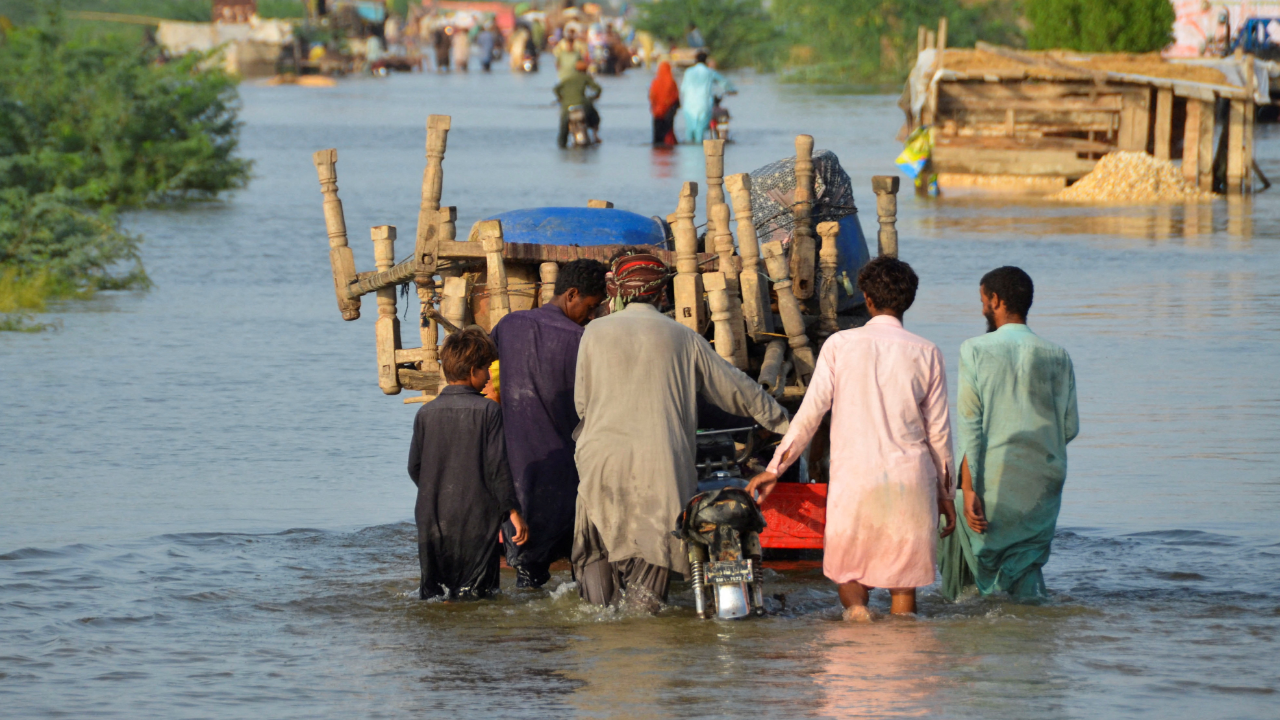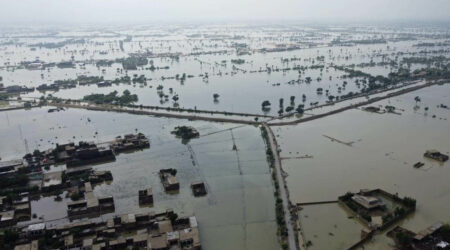Islamabad: Pakistani authorities are struggling to prevent the country’s biggest lake bursting its banks and inundating nearby towns after unprecedented flooding, while the disaster management agency on Monday raised its count of flood deaths by another 24.
Record monsoon rains and melting glaciers in Pakistan’s northern mountains have brought floods that have affected 33 million people and killed at least 1,314, including 458 children, Pakistan’s National Disaster Management Agency said.
The floods have followed record-breaking summer temperatures and the government and the United Nations have both blamed climate change for the extreme weather and the devastation it has brought.
Authorities on September 4 breached Pakistan’s largest freshwater lake, displacing up to 100,000 people from their homes in the hope of draining enough water to stop the lake from bursting its banks and swamping more densely populated areas.
But water levels in the lake, to the west of the Indus river in the southern province of Sindh, remain dangerously high. The floods are a huge burden for an economy already needing help from the International Monetary Fund.
The United Nations has called for $160 million in aid to help the victims of the floods but Finance Minister Miftah Ismail said the cost of the damage was far higher than that.
“The total damage is close to $10 billion, perhaps more,” Ismail said in an interview with CNBC. “Clearly it is not enough. In spite of meager resources Pakistan will have to do much of the heavy lifting.”
Nevertheless, help from abroad is arriving. Relief flights from the United Nations and countries including Turkmenistan and the United Arab Emirates arrived on September 5, the foreign ministry said in a statement.
Floods endanger heritage site of Mohenjo Daro
The department of archaeology has called for urgent attention towards conservation and restoration work at Mohenjo Daro apprehending that the site may be removed from the world heritage list if such work was not carried out.
Sources said that archaeological ruins of Mohenjo Daro had received record rains, measured at 779.5mm, which continued from Aug 16 to 26. It resulted in considerable damage to the site and partial falling of several walls, including the protection wall of the stupa dome.
Dozens of construction workers under the supervision of archaeologists have started the repair work. But the estimated cost of the damages at Mohenjo Daro.












